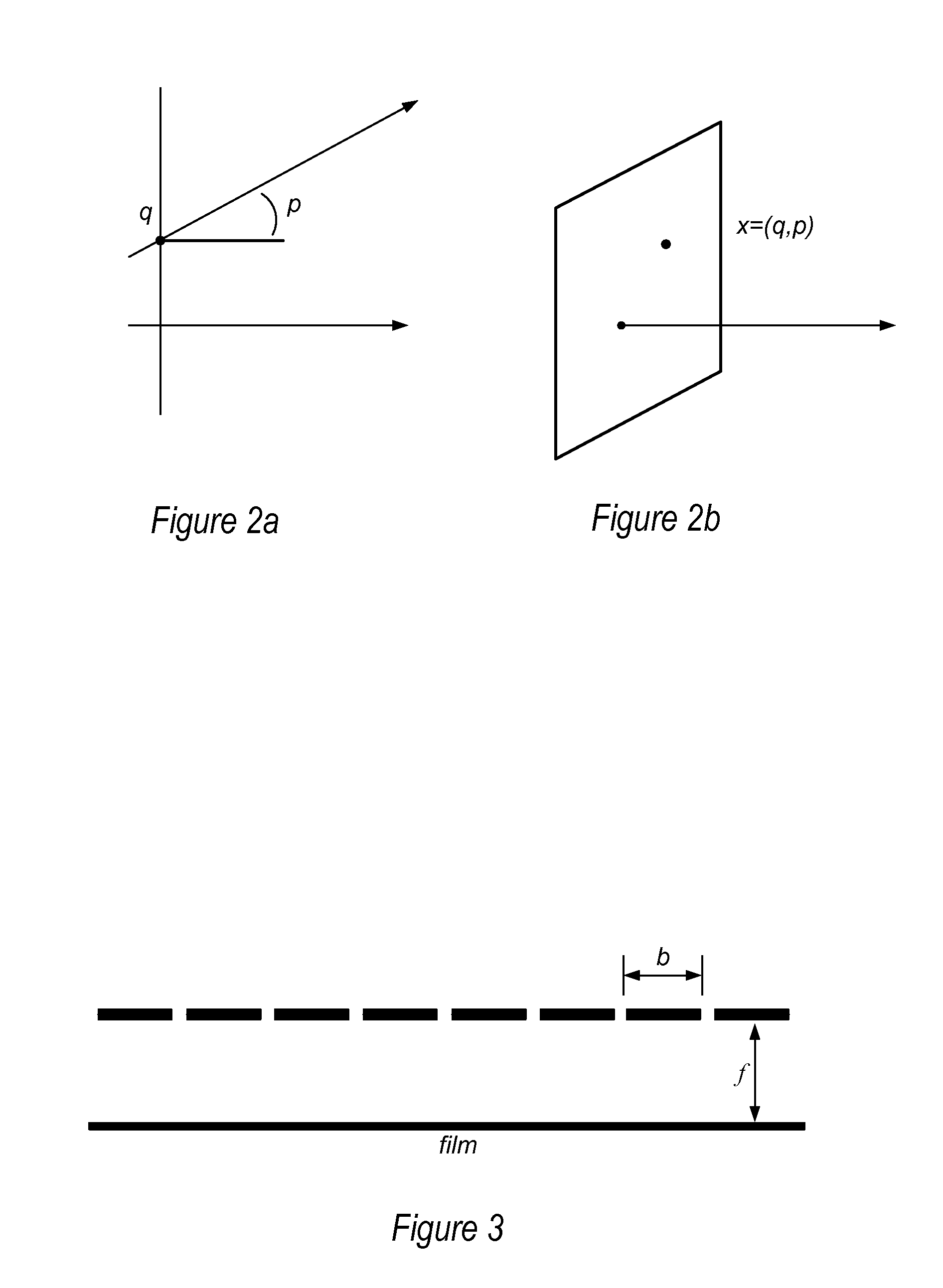Method and Apparatus for Radiance Capture by Multiplexing in the Frequency Domain
a frequency domain and multiplexing technology, applied in the field of frequency domain multiplexing methods and apparatuses, can solve the problems of inconvenient use, inconvenient operation, and inability to capture a large amount of optical information by conventional cameras,
- Summary
- Abstract
- Description
- Claims
- Application Information
AI Technical Summary
Benefits of technology
Problems solved by technology
Method used
Image
Examples
Embodiment Construction
[0055]Various embodiments of a method and apparatus for capturing radiance in the frequency domain, and demultiplexing the captured radiance in the frequency domain, are described. Various embodiments of light-field, or radiance, cameras, including both mask-based and lens-based radiance cameras, are described that multiplex the radiance in the frequency domain by optically mixing different spatial and angular frequency components and capturing the signal via a photosensor (e.g., conventional film or an electronic sensor such as a charge-coupled device (CCD)). Some embodiments of the radiance camera may be based on arrays of “active” optical elements, such as lenses and prisms. Other embodiments of the radiance camera may be based on “passive” optical elements, or masks, such as meshes or grids of circles or pinholes. Both types of radiance cameras may be understood and described according to a mathematical formalism in the frequency domain.
[0056]In the following sections, a mathema...
PUM
 Login to View More
Login to View More Abstract
Description
Claims
Application Information
 Login to View More
Login to View More - R&D
- Intellectual Property
- Life Sciences
- Materials
- Tech Scout
- Unparalleled Data Quality
- Higher Quality Content
- 60% Fewer Hallucinations
Browse by: Latest US Patents, China's latest patents, Technical Efficacy Thesaurus, Application Domain, Technology Topic, Popular Technical Reports.
© 2025 PatSnap. All rights reserved.Legal|Privacy policy|Modern Slavery Act Transparency Statement|Sitemap|About US| Contact US: help@patsnap.com



